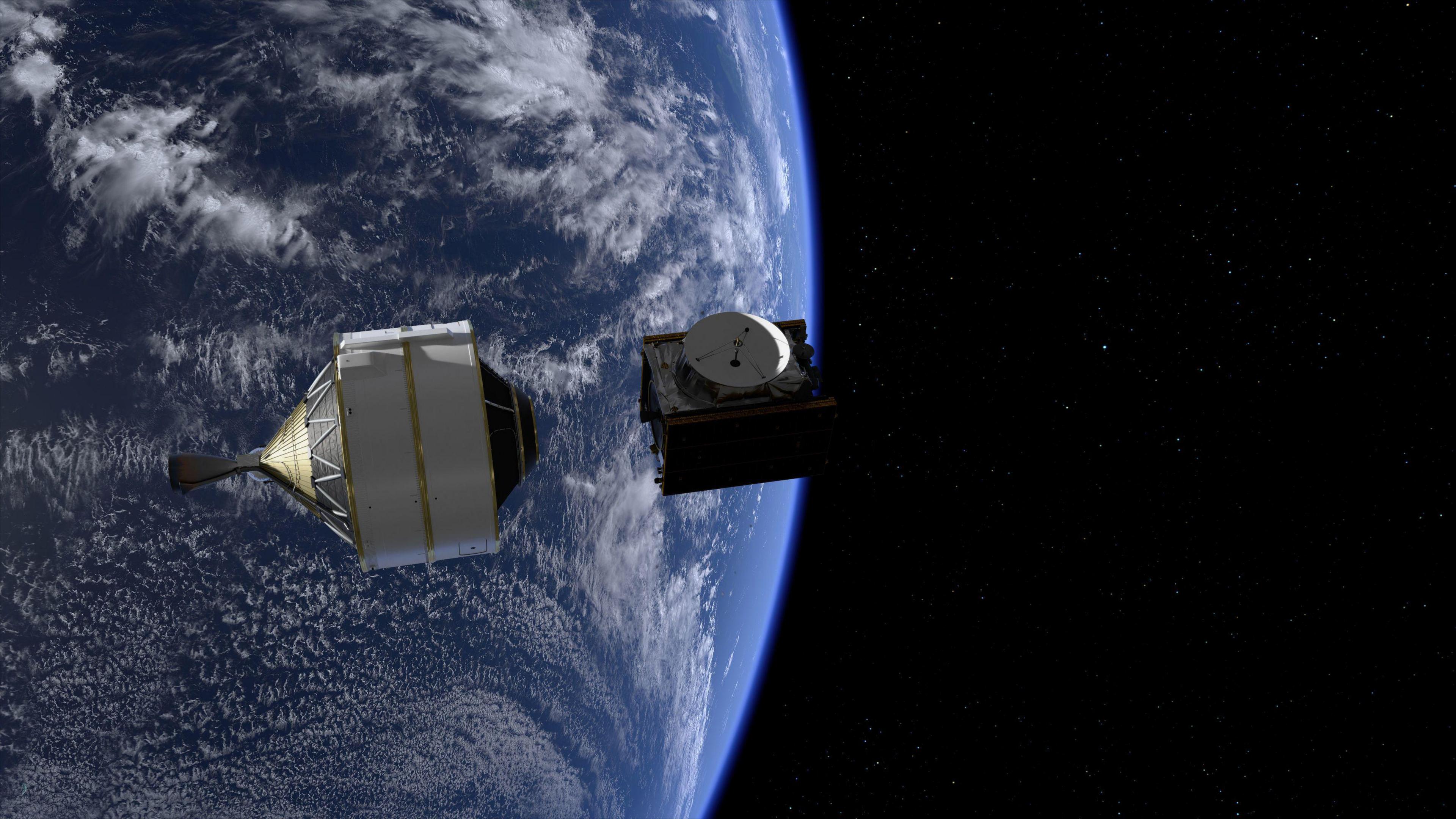Juice spacecraft to fly-by Earth and Moon in 'world first'

- Published
The European Space Agency's mission to Jupiter will fly past Earth and the Moon tonight, in what scientists are calling a "world first" fly-by.
The spacecraft, called the Jupiter Icy Moons Explorer - or Juice - for short, was launched in April last year.
Experts will guide Juice past our planet in order to help it on its way to the giant gas planet.
It is due to arrive at Jupiter in 2031, after a 4.1 billion-mile journey!
More on the Juice mission
- Published15 April 2023
- Published21 January 2023
- Published13 April 2023
What will happen to Juice?
Experts from the European Space Agency (ESA) say they plan on using the Moon's gravity, and then Earth's, as a natural brake - slowing itself down before firing it on to the next phase of its journey.
By doing so, the move will change Juice's speed and direction to alter its course through space.
However, the slightest mistake could take the spacecraft off course - which could result in the end of the mission.
Dr Caroline Harper, from the UK Space Agency, said: "This is a world first - a double fly-by of the Moon and Earth has never been done before."
"This saves a huge amount of fuel, which means that when Juice arrives at its destination it can do a lot more science," she explained.
Two cameras on board Juice will also be taking photos throughout the lunar-Earth flyby - which the ESA say they will share publicly when they receive them.
What is the Juice mission?
The Ariane 5 rocket launched the Juice mission from the European Space Agency's spaceport in French Guiana in April 2023.
Juice is expected to arrive at Jupiter in July 2031 - where it will explore three of the planet's moons.
The six-tonne spacecraft will make fly-bys, which means a close approach for observation without landing, of Jupiter's moons Callisto, Ganymede and Europa.
It will then settle permanently around Ganymede in late 2034. The aim of the mission is to find out if any of the moons are habitable and can support life.
There are scientific instruments on board the spacecraft, including high-resolution cameras and telescopes which can take detailed pictures of the moons and radar to make 3D maps of the surfaces.
